THE GAME OF THEIR LIVES
THE GAME OF THEIR LIVES
THE
1958 NFL
CHAMPIONSHIP
50TH
ANNIVERSARY
EDITION
DAVE KLEIN

Copyright 2008 by Dave Klein
All rights reserved. No part of this book may be reproduced in any form or by any electronic or mechanical means, including information storage and retrieval systems, without written permission from the publisher, except by a reviewer who may quote passages in a review.
Published by Taylor Trade Publishing
An imprint of The Rowman & Littlefield Publishing Group, Inc.
4501 Forbes Boulevard, Suite 200, Lanham, Maryland 20706
www.rlpgtrade.com
Estover Road, Plymouth PL6 7PY, United Kingdom
Distributed by NATIONAL BOOK NETWORK
Library of Congress Cataloging-in-Publication Data
Klein, Dave, 1940
The game of their lives : the 1958 NFL championship / Dave Klein. 50th anniversary ed.
p. cm.
ISBN-13: 978-1-58979-384-2 (pbk. : alk. paper)
ISBN-13: 978-1-58979-405-4 (electronic)
1. National Football League Championship Game (26th: 1958: New York City) 2. Baltimore Colts (Football team)History. 3. New York Giants (Football team)History. 4. Football playersUnited StatesBiography. 5. National Football League Championship Game (26th: 1958: New York City) I. Title.
GV956.2.N38K58
2008 796.332dc22
2008029914
 The paper used in this publication meets the minimum requirements of American National Standard for Information SciencesPermanence of Paper for Printed Library Materials, ANSI/NISO Z39.48-1992.
The paper used in this publication meets the minimum requirements of American National Standard for Information SciencesPermanence of Paper for Printed Library Materials, ANSI/NISO Z39.48-1992.
Manufactured in the United States of America.
For Talia Skye
CONTENTS
, by Ernie Accorsi, Former General Manager, New York Giants
FOREWORD
The story of the 1958 NFL Championship Game started for me on a summer night in 1956 in Hershey, Pennsylvania, my hometown and the site of the Philadelphia Eagles training camp from 1951 to 1967. Representative of the simplicity of the NFL in those days, the Eagles played two or three preseason games (then called exhibition games) in Hershey each summer. Traditionally, they would open the preseason against the Baltimore Colts, who trained in nearby Westminster, Maryland.
Even then, I hated the Eagles. Maybe not as much as I do now, but pretty close. Why? Well, first of all I never rooted for the local teams for some reason. I rooted for the Yankees, not the Philadelphia Phillies or the Philadelphia Athletics. I rooted for Army, not Penn State. And it didnt get much more local than the Eagles, practicing twice a day, a ten-minute walk from my boyhood house and playing preseason games in my high school stadium. Second, the Eagles, not a quiet group by the way, took over this small village with a raucous behavior. No shrinking violets on this teamsuch as Chuck Bednarik, Norm Van Brocklin, and Bobby Walston.
So, as a kid, I needed a team. Long before the advent of the great teams, it became the Baltimore Colts. I first saw them against the Los Angeles Rams in a still not completed Baltimore Memorial Stadium on November 22, 1953. Little did I know, as an eleven-year-old, but I saw history that day. George Taliaferro, an African American, started at quarterback for the Colts.
By the summer of 1956 there was hope. The 1955 season produced a Heisman Trophy winner, Alan Ameche; halfback L. G. Dupre; and the 1955 Rookie of the Year, George Shaw, a quarterback from Oregon. On that summer night in 1956, my best friendEd Ionniand I used the two bucks we made from caddying that day at the Hershey Country Club to buy tickets on the Colts, side, excited about Shaw and Ameche. After one quarter, Shaw was pulled and a skinny, bowlegged free agent quarterback, who was called John YOO-NA-TASS by the public address announcer, with rubber bands holding up his long sleeves, entered the game. Obviously, I wasnt happy and neither was Ed. We didnt spend our two dollars to see this sandlot quarterback; we wanted to see the incumbent rookie of the year. A very nice man from Baltimore was sitting next to me, and he calmly said, Hey, kid, calm down; this guy threw seven touchdown passes Tuesday night in an intersquad scrimmage in Baltimorefour for the blue team, three for the white. It was then that I saw Johnny Unitas throw the first pass of his career in an NFL game against an NFL opponent, even if it was preseason. Before long, even an untrained fourteen-year-old was speechless watching this unknown throw lasers all over the field, including a pair of touchdown passes and a victory over the Eagles.
I guess, from that night on, my life changed. I was transfixed by this gangly-looking quarterback and the team he led. There was heartbreak ahead, especially in 1957 when the Colts lost their last two games on the road in San Francisco and Los Angeles, which cost them the Western Division championship, but 1958 produced the Cinderella season a young boy in Hershey was dreaming about.
During the regular season, the New York Giants had beaten Baltimore in Yankee Stadium. But Unitas didnt play. Shaw did. Unitas had suffered a punctured lung the week before when John Symank fell on him on the sideline during a 560 Colts pounding of the hapless Green Bay Packers.
Now it was December 28, 1958, and a twenty-four-year-old kid named Unitas awoke in the Grand Concourse Hotel in The Bronx to meet his destiny. I guess it was on that day that the seeds of my professional football doctrine were sowed. That was when my belief that the quarterback was the most important player in professional sports was born. That was when I began to believe that certainly there are exceptions, now and then, but that you cant become a great team without a great quarterback.
History proves my point.
The Giants had a great defense featuring three Hall of FamersAndy Robustelli, Emlen Tunnell, and Sam Huff. On offense they had two more Hall of FamersRoosevelt Brown and Frank Giffordplus a very capable quarterback in Charlie Conerly. But the Colts had the great Unitas, and quite simply, with all the fabled players in that game, including the six Hall of Famers on the Colts team, Unitas made the difference. As I watched him play on that historical day on a small black-and-white television set, I began thinking, even as a high school kid, that Unitas would not let the Colts lose, that when everything was on the line, Unitas would get the team in the end zone.
I remember how dark it was getting in Yankee Stadium, and I remember the Colts quarterback looking from side to side before he took the snap (I was way too unsophisticated to realize what he was doing) and I remember his eyes on the final two drives. Its still so real in my memory. As the afternoon grew into a darkened early evening, even on the little television you could sense and almost feel the bitter cold taking over this grand stadium. My father and I were playing in a father-son golf tournament at the Breakers Hotel in Palm Beach. Now, this was not a venue that an Italian immigrant from Pennsylvania and his son would normally frequent. But we were there and we had to play a practice round on that Sunday. When we teed off, the Colts led, 143, and were driving deep into Giants, territory. I felt things were in hand. On the ninth green, an hour and a half later, I was looking at a five-foot putt I never tried to make. I asked a caddy passing by what the final score was. He said, Son, theyre still playing. Its in overtime. I dropped my putter, left the ball perched where it was, and ran into a small clubhouse alongside the green, my father following behind me.
Next page

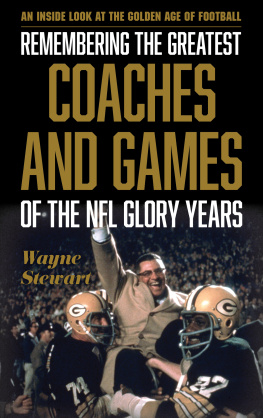
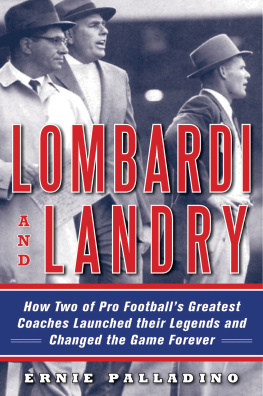
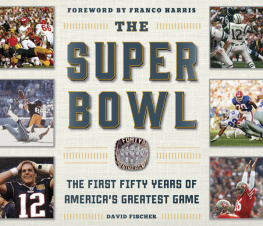
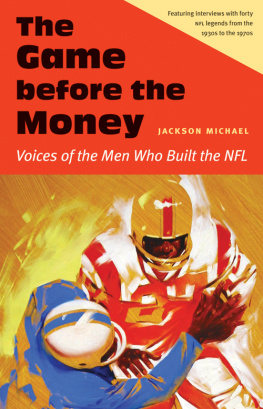


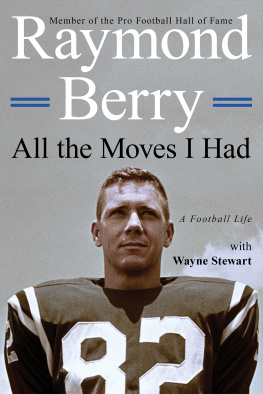
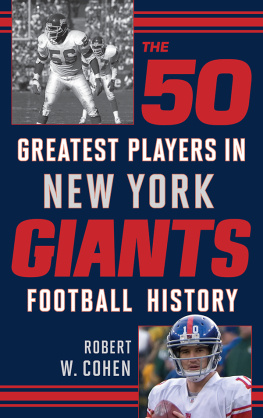

 The paper used in this publication meets the minimum requirements of American National Standard for Information SciencesPermanence of Paper for Printed Library Materials, ANSI/NISO Z39.48-1992.
The paper used in this publication meets the minimum requirements of American National Standard for Information SciencesPermanence of Paper for Printed Library Materials, ANSI/NISO Z39.48-1992.